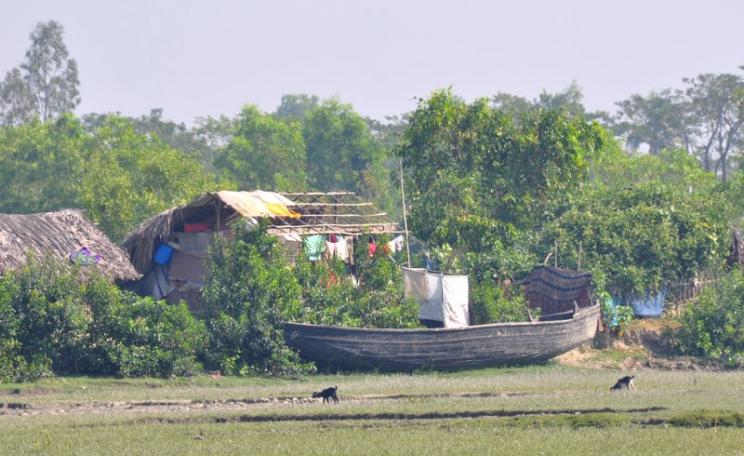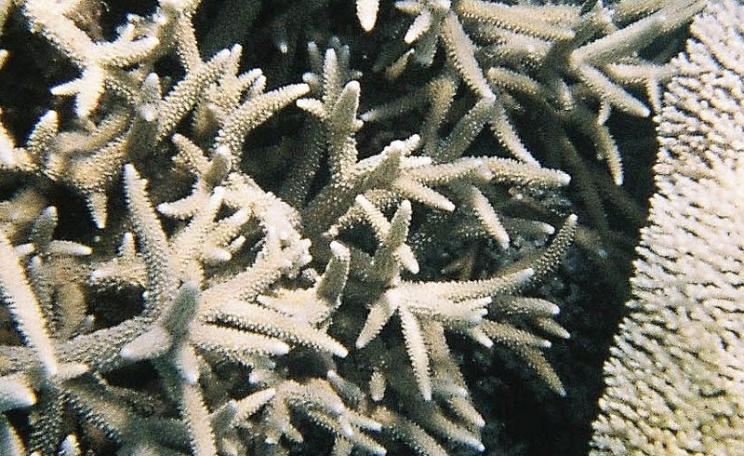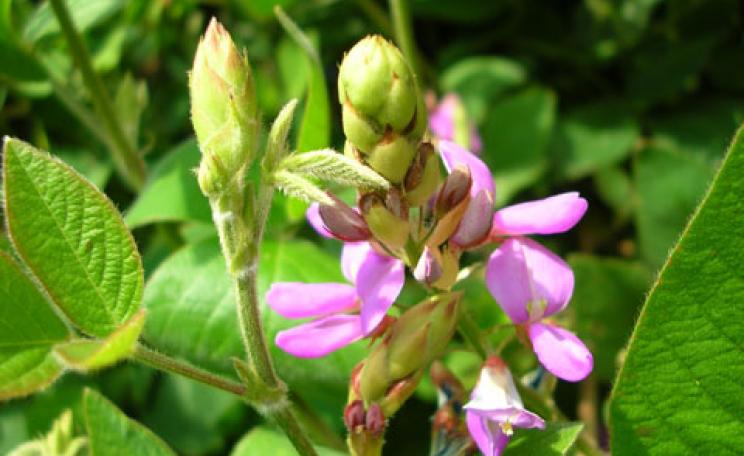Climate change’s stealthy advance alters our oceans in two well-known ways: acidification and sea level rise. But our planet’s subtle warming has had another, under-the-radar effect: oxygen depletion.
While oxygen depletion may not draw dramatic headlines or spark rallies, dipping oxygen levels pose a growing problem for marine life and fisheries. It works like this: first, as concentrations of greenhouse gases rise and the Earth warms, ocean temperatures rise. And since warmer water not only expands but also holds less oxygen than colder water, a rise in the mercury will leave fish and other marine life in certain areas without sufficient oxygen. Last July, global ocean surface temperature was the warmest on record: 1.06 degrees Fahrenheit above the 20th century average of 61.5 degrees.
Second, and more importantly, global warming stratifies the upper ocean, further limiting the oxygen supply to deeper waters. Scientists who study the ocean predict global ocean oxygen levels to drop anywhere from one to seven percent over the next century.
Expanding regions of low oxygen water have stressful and even deadly potential for marine life. In the most extreme situations, dead zones lack the oxygen levels sufficient to sustain life that once thrived there. Pockets of low oxygen waters can be found throughout the ocean, but for most worldwide waters, slightly sunken oxygen levels are not a disastrous problem—yet. But with the stakes so high for coastal fisheries and our oceans looming, can we still afford to ignore this climate change symptom?
Deep water
Dive down deep into a lake and you’ll suddenly reach a layer of ice-cold water - the thermocline - where warmer water fails to mix with colder, denser water. 'The ocean is the same way, just on a bigger scale,' explains Scott Doney, oceanographer at the Woods Hole Oceanographic Institution in Woods Hole, Mass. The farther down the ocean water column, the lower temperatures plunge. Seawater near the bottom of the deep-sea circulates in from the poles at near-freezing temperatures that stay icy cold. Even water at the sea floor near the Equator came from either the Arctic or Antarctica, says Doney.
It’s near the thermocline, between 400 and 1200 metres down, where oxygen minimum zones in the open ocean tend to lurk. 'In the future, most of the extra heat in the ocean will be trapped in the upper ocean, and so what you’re doing is making that layering even stronger,' Doney explains. The result is sluggish circulation of high-oxygen water down into the middle and depths of the ocean.
The worst of the open ocean oxygen minimum zones can be found in the relatively stagnant cyclonic gyres that exist north and south of the equator in the subsurface layers of the Atlantic and Pacific oceans, according to a study by Ralph Keeling, Arne Körtzinger and Nicolas Gruber published in the Annual Review of Marine Science.
As mixing slows, climate change causes another serious problem: reduced nutrient cycling. In addition to supporting life, oxygen is key in the cycling of carbon, nitrogen and other elements. 'Expanded oxygen minimum zones can have the effect of stripping nutrients out of water,' Doney says. 'Over some time period, that may start to reduce productivity.'
So while lowered oxygen is in itself troublesome, it’s one of many interconnected cogs slowly turning in a precise, calculated way that makes our ecosystem work. Disrupt one cog and the machine begins to break down.
A growing problem
Dropping oxygen levels aren’t a new phenomenon: in the 1960s oxygen levels were already beginning to fall in tropical oceans at depths of 300 to 700 meters. That’s where oxygen is currently decreasing 0.09 to 0.34 micromoles per kilogram per year, according to a study by physical oceanographer Lothar Stramma of the Leibniz Institute of Marine Sciences in Germany, lead scientist on a 2008 study published in Science.
Aptly named 'dead zones', the most extreme end of the low-oxygen spectrum, already plague more than 400 coastal marine ecosystems in a total area spanning 245,000 square kilometers, according to marine biologist Robert Diaz of the Virginia Institute of Marine Science and lead scientist in a 2008 study published in Science. Each zone can cover anywhere from hundreds of square miles to thousands of square miles, and that dead zone coverage is expected to double each decade. Such extreme dead zones near the coast are mostly caused by eutrophication, fueled by run-off from fields and sewage discharges. These dead zones could be made worse, however, by depressed oxygen levels in the open ocean, because coastal systems get some oxygen through seawater exchange with the open ocean.
Regions of low dissolved oxygen are also growing fathoms down in the ocean depths, too. Far below the ocean surface, dead zones span about 6.5 million square kilometers at a 500-meter depth, nearly the size of the lower 48 contiguous states, according to Gary Shaffer, professor of oceanography/climate at the University of Copenhagen and lead scientist for a study published in Nature Geoscience in January 2009. His team modelled projected global change over the next 100,000 years and found severe, long-term ocean oxygen depletion and expansion of ocean oxygen-poor zones. Even in the next 100 years, changes will be detectable. That 6.5 million square kilometers of dead zone may double in the next 100 years, and even more if ocean circulation is slowed by global warming, according to Shaffer.
Dead zones - including seasonal dead zones that worsen in the summer - have already formed in major fishery waters including the Gulf of Mexico, the Chesapeake Bay, the Baltic Sea, Kattegat, Black Sea, East China Sea and in the waters off the coast of Oregon, US. Faring nearly as bad, extensive oxygen minimum zones exist off the North American and South American coasts, the Arabian Sea, the Bay of Bengal and the west coast of Africa. Oxygen-poor waters from the open ocean can move into coastal waters through shifting currents, exacerbating human-caused dead zones in coastal areas.
Impact on marine life
The cost for ecosystems short on oxygen range from the death of bottom-dwelling benthic organisms to hindered spawning of cod in the central Baltic, according to Diaz. Marine life responds to low oxygen in many ways, and an organism’s fate typically depends on its size - and diet. Fish and crustaceans are among the most sensitive to oxygen level drops.
'In the water column, fish and crustaceans are the most mobile, and tend to swim away first,' says Lisa Levin, a biological oceanographer at Scripps Institution of Oceanography in San Diego, California, followed by shrimp, crab and lobsters if oxygen decreases further. On the sea floor, many echinoderms - such as starfish, sea cucumbers and sea urchins - don’t survive well when oxygen drops, says Levin, though brittle stars are the most tolerant of the echinoderms.
Near the coast, fish tend to prefer shallow, better oxygenated waters, which can mean higher densities of, and more competition between, fish in one area. Some fish have, however, learned to adapt. 'Anchovy and sardine, which normally live in upwelling areas, are affected but have evolved to live above oxygen minimum zones,' Levin says. A few species of bacteria have even evolved to live in anoxic conditions by oxidising sulphur, according to Levin. And, unfortunately for swimmers, jellyfish may flourish in low oxygen zones. Among the hardiest are organisms barely visible by the naked eye, such as nematode worms, which can survive with almost no oxygen.
Another tragedy of oxygen-minimum zones is lowered diversity in species. Habitat compression, too, can hurt diversity as areas of low oxygen expand and suitable habitat for shrinks, and animals must either move up in the water column or towards shores. If marine life is forced to flee, animals would be concentrated in available habitat, as well as concentrated closer to shore, explains Levin, which would make them easier targets for fisherman. Such shore concentration could lead to an increased risk of over-fishing.
Climate Change
As oxygen levels drop, albeit slowly, in oceans worldwide, scientists finger climate change as the likely culprit. If we continue emitting greenhouse gases at current rates, future generations could see expanding ocean dead zones. But forecasting is a difficult science, with hundreds of variables, unknown factors and unforeseen outcomes. And there is much to be learned about how the ocean responds to climatic change. Even so, scientists are noting detectable changes in oxygen levels, and it’s just a matter of how much, and how soon.
'People will feel it, especially in many fisheries along the coast,' Doney says. And, as with many problems caused by climate change, those with the least means may be affected the most. 'Oxygen minimum zones are concentrated next to poor countries within which many depend upon the sea for their livelihoods,' Shaffer says. 'This is another blatant example, like that of sea level rise, where a problem created by the developed world will most affect the underdeveloped world.'
But like many symptoms of climate change, it’s likely that these changes will be small at first, growing slowly over time. Curing coastal, human-caused dead zones, at least, is feasible: we could cut the amount of nutrients flowing into coastal waters by reducing the amount of nutrients allowed into local waterways. Next to the difficulties of curbing climate change, reducing nutrient run-off seems like easy pickings.
Carrie Madren is a freelance journalist
| READ MORE... | |
 |
INTERVIEW Michael Meacher MP: humans only have 200-300 years left on earth Former environment minister Michael Meacher on the place of humanity in the universe, intelligent design, the survival of the human race, Gaia theory and uncertainties over climate change |
 |
NEWS Aid should focus on climate resilience and less intensive farming models Subsistence farming may be seen as a low rung on the development ladder but it can play a vital role in helping low-income countries to adapt to climate change says a government-funded report |
 |
NEWS Climate change should be billed as a 'health' not 'environmental' disaster Public may be more likely to accept responsibility for climate change and support mitigation action if they see it as a threat to human health, suggests research |
 |
SPECIAL CONTENT Atlantic Rising: Guyana using mangroves to defend itself from sea-level rises Global sea level rise poses a big challenge for the small country of Guyana but mangrove planting offers a cost-effective way of protecting coastal regions |
 |
NEWS 'Uneven' sea level rises threaten Indian Ocean coastal regions Global warming is adversely affecting certain countries around the Indian Ocean with higher than average sea level rises, according to analysis published in Nature Geoscience |








